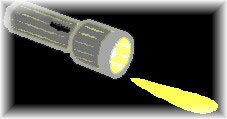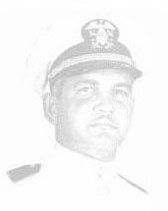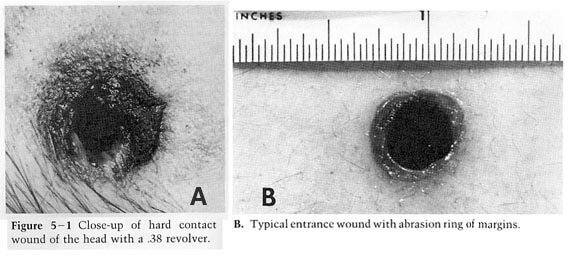 Dark Corners Menu |
 Pitzer Main Page |
 Dark Corners Menu |
 Pitzer Main Page |
 |
|
|
This is the fourth DPQ article on the death of Lieutenant Commander William B. Pitzer, US Navy. The other three articles may be accessed below [1-3]. The third in the series, "Pitzer: An Update," included the news that the Cold Case Squad of the Naval Criminal Investigative Service would review the information in the case with a view to it possibly being reopened. That review, which took place a year later, did not lead to a new investigation.
The purpose of this brief article is to update those interested in the case.
Officially, LCDR Pitzer committed suicide by shooting himself in the right temple; the bullet exited slightly behind and above the left ear [1]. In the second article of the series, "Interpretations of New Evidence in the Pitzer Case" [2], it was theorized that a left-temple wound -- described by the US Navy medical examiner in his report -- was one and the same as a wound bearing muzzle marks and powder burns described by the Montgomery County deputy medical examiner. Two entry wounds, one in the right temple and one in the left temple, would be strongly indicative of homicide. The death-scene photograph shows what looks like a wound in the left temple with the right side of the head obscured from view [4].
After more than three decades, the autopsy photographs remain the most likely means of achieving a firm conclusion on how LCDR Pitzer died. Requests to the navy for these photographs resulted in being told that they were routinely destroyed after the passage of 25 years [3]. Responses to similar requests to the FBI indicate that the Bureau does not have the autopsy photographs in their Pitzer file [3]. However, in August of 2002 -- at Eaglesham's suggestion and with his help -- requests to the Armed Forces Institute of Pathology [5] resulted in the release of approximately twenty color and black and white autopsy photographs to Robert Pitzer, son of the deceased. A month later, Hersh visited Pitzer. While they examined the prints, Pitzer contacted Eaglesham by telephone and they passed along the following salient items of information:
In our view, the most important of these observations are the first and last. The reversal of the prints offers an explanation as to why the navy medical examiner described a left-temple wound. For obscure reasons, his report is dated February 1, 1967, i.e. three months after the death. If the navy medical examiner used similar pictures of the body to refresh his memory in the preparation of his report, it is possible that he mistakenly described a left-temple wound. The absence of a wound in the left temple means that the strongest indication of homicide would not be applicable. This brings into sharp focus the need to have the photographs examined by experts in gunshot wounds to determine if the entry wound in the right temple bears the characteristics of a close shot [consistent with suicide (see update below)] or of a distant shot (indicative of homicide). In the spring of 2003 -- with Mr. Pitzer's encouragement -- Hersh made contact with a team of law-enforcement experts in forensics and arranged a meeting to examine the photographs in Pitzer's possession. At the eleventh hour, Pitzer declined to attend. A FOIA request by Eaglesham for copies of the autopsy photographs was denied because of lack of familial ties.
The existence of the photographs taken at the autopsy on William Pitzer's body presents the possibility of resolution in this case, provided that further copies can be obtained for examination. A summary of events since the publication of the third article in this series will be provided in a future issue of JFK/Deep Politics Quarterly, including a fuller discussion of the implications of what was seen by Hersh in the autopsy photographs.
Update, March 6, 2004: A few days ago, I (Eaglesham) saw about a dozen of the autopsy photographs, as good-quality color prints, and several others scanned into a computer. I confirmed for myself the items listed in the article above, except for the first; the photographs I saw were printed in the correct orientation. Another aspect worthy of mention is that the right hand was blackened, apparently with soot. I was not given any of these photographs -- neither in hard nor electronic form. I had with me Vincent J.M. Di Maio's book Gunshot Wounds: Practical Aspects of Firearms, Ballistics, and Forensic Techniques (Elsevier, 1985). The wound in LCDR Pitzer's right temple was closely similar to that shown in Figure 5-1 on page 102, see below (a distant entry wound is shown for comparison; Figure 4-16B, page 67). 

As stated at the end of the article above, a fuller discussion of the implications of what the autopsy photographs show will follow in due course. |
 Dark Corners Menu |
 Pitzer Main Page |